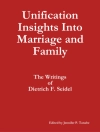Think of the thriving evangelical churches in your area, and the chances are they will be in the ‘nice’ areas of town and their leaders will be middle class. I once attended a lecture at which the speaker showed a map of my city, Sheffield. The council wards were coloured different shades, according to a series of social indicators: educational achievement, household income, benefit recipients, social housing, criminal activity, and so on. Slide after slide showed that the east side of the city was the needy, socially deprived half, compared to the more prosperous west. Where are the churches? Counting all the various tribes of evangelicalism, the large churches are on the west side. The working-class and deprived areas of our cities are not being reached with the gospel. There are many exciting exceptions, but the pattern is clear. According to Mez Mc Connell from Niddrie Community Church in Edinburgh, of the fifty worst housing schemes in Scotland, half have no church, and most of the others only have a dying church. Very few have an evangelical witness. This book is about reaching those unreached areas. The Industrial Revolution saw increased social stratification. It was during this time that middle-class and working-class identities began to emerge. And in the late eighteenth and early nineteenth centuries, evangelicalism appealed disproportionately to skilled artisans, according to historian David Bebbington. Skilled artisans made up 23% of the population, but 59% of evangelical Nonconformists fell into this category. Both unskilled labourers and the middle classes were under-represented in Nonconformist ranks. Methodists made a greater impact on labourers, but the proportion of Methodists who were labourers (16%) was still just below the proportion in society as a whole (17%). By the mid-1800s, perhaps half the UK population attended church. But contemporaries remarked that the labouring population was largely absent. Many congregations in mining areas were predominantly working class, but the majority of the working classes were not worshippers. In the late nineteenth century, the trend towards class-specific suburbs accelerated, and church attendance varied accordingly. Middle-class Ealing had 47% attendance, while working-class Fulham had 12%. Religious practice was becoming more directly associated with class. This was accentuated by the upward mobility of churchgoers. By the 1930s, almost half of Methodist members were in non-manual occupations, and by the 1970s it was three-quarters. So why have we evangelicals been so ineffectual at reaching the urban poor, despite our origins?
Tim Chester
Unreached [EPUB ebook]
Unreached [EPUB ebook]
Купите эту электронную книгу и получите еще одну БЕСПЛАТНО!
язык английский ● Формат EPUB ● страницы 176 ● ISBN 9781844748457 ● издатель Inter Varsity Press UK ● опубликованный 2012 ● Загружаемые 6 раз ● валюта EUR ● Код товара 2630184 ● Защита от копирования Adobe DRM
Требуется устройство для чтения электронных книг с поддержкой DRM












